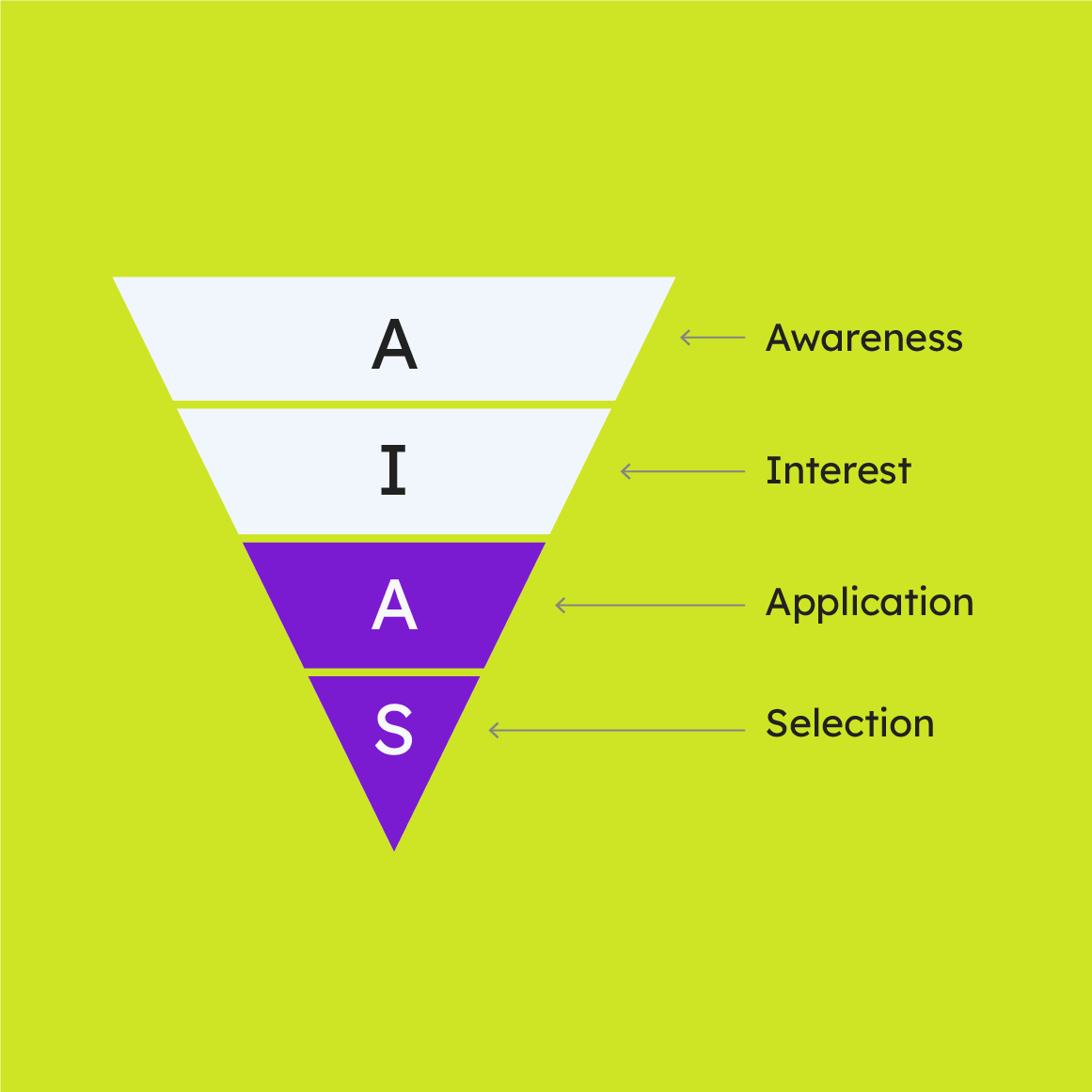From Clicks to Candidates
How marketing strategies can revolutionize your recruitment
Janis Kreilis
But why? What do marketers know about hiring?
As you've probably noticed, recruitment ain't what it used to be. The availability of top talent has decreased while the number of companies competing for this shrinking skill pool keeps increasing every year.
As the changing supply and demand of skills shifts the market power from employers to candidates, our roles as recruiters are evolving, too, leaving the usual territory of just receiving applications and evaluating them. From employer branding to candidate targeting and conversion metrics, we're suddenly up to our ears in marketing jargon.
That's no accident. For the past hundred years, marketers have dealt with a buyer's market - in other words, selling stuff to people who have lots of options. In the process, they've developed a whole toolkit of tried-and-tested techniques and technologies - methods that we as recruiters can put to great use.
Let's unpack this.
How to read this guide We've created this guidebook with a range of potential readers in mind. Those of you just starting out in recruitment or not hiring regularly might enjoy going through all the sections, which cover the background on the changes in recruitment. In the meantime, our more experienced readers might benefit from jumping into the specific topic using the outline on the left and skimming the parts they're familiar with.
If you have feedback on making this guide more helpful, please let us know! We'd love to evolve it together. Reach out at [email protected] with your comments and suggestions.
Hiring challenges in 2023: lack of skilled people and remote work-driven competition
In simple terms, we have too many jobs to fill and not enough qualified candidates.
You've probably felt this over the last few years. Where you needed five interviews to hire the right person, you now need fifteen. Where you got a hundred applications, you now get a dozen (and they're not even that good). Where you could hire someone in four weeks, it now takes several months to close the position.
And, if you can't relate, consider yourself lucky, as 75% of recruiters reported talent shortages and hiring difficulties in 2022, up from just 34% a decade ago.
Where have all the people gone?
Before we get to skills and talent, let's start with sheer demographics.
Even as the world's population continues to grow rapidly, many developed countries see their labor pools shrink as baby boomers – the “fattest” generation – retire from the workforce. Meanwhile, there are simply fewer millennials and zoomers around to fill the void.
Demographic projections show that by 2060, there will be about 10% fewer people in the workforce worldwide than there are today! For most developed countries, this change will be even more extreme.

And where have all the skilled people gone?
Demographics would partly explain the labor shortage. However, the skilled part of the labor shortage raises even more concerns.
On the demand side, as businesses in the advanced economies digitalize their operations en masse, their needs for tech-enabled workforce grow accordingly. On the supply side, however, new technology is developing so quickly that employees can hardly keep up with it. Nor can educational institutions - traditionally slow-moving systems - adapt fast enough to mint digital natives in sufficient numbers.
That's why you've probably heard about the growing skills gap worldwide - the topic gets a spotlight in the news at least once a week somewhere in the world.
The global organizational consulting firm Korn Ferry's estimates show that some 85 million job openings will go unfilled by 2030, creating a talent shortage worth more than $8.5 trillion.

Remote work means open season
Finally, the spread of remote work following the Covid pandemic has unleashed a significant part of the labor market from the shackles of geography. Companies can now source candidates globally. However, top talent can now also seek their next opportunity worldwide. This has created an open market where competition is fiercer than ever, favoring the strongest companies and candidates.
Borrowing tested solutions from marketing
The fact that marketing terms are creeping into the professional lives of recruiting teams is no accident, as recruitment must now tackle the same supply and demand imbalance that has kept marketing teams up at night for the past two hundred years.
During the Industrial Revolution, production became so efficient that it disrupted the existing relationship between supply and demand. Whereas previously, companies could hardly make enough goods to meet market needs, now, their focus shifted to making sure customers choose their products over thousands of others.
This new reality gave birth to marketing, a field that has amassed a lot of great lessons for recruitment teams today.
Meet AIDA, the original marketing funnel
Many core marketing concepts still in use today date back to the heyday of industrialization. For example, AIDA - or the funnel of awareness, interest, desire, action - dates back to 1898.
The model works across mediums, technologies, and generations because it explains the fundamental workings of the human mind rather than presents a specific technique for selling products or services. The funnel breaks down our decision-making process for choosing a product or service into four steps:
Awareness that something exists
Interest in learning more about it
Developing a desire for it
And finally, the decision to purchase it.

In each of these steps, we evaluate different qualities of the product or service. As a result, the company can provide relevant information about its products or services at the right time to guide the potential customer further down the funnel and ultimately make the purchase.
For example, if you need a new sofa, you might:
First search for and compare places to buy one (awareness)
Then find models that meet your needs, desires, and budget (interest)
Select a few finalists (desire)
And finally, buy one (action).
All right, you might say, this is great and all, but how does it relate to hiring?
Meet AIDA’s great-grandchild - the hiring funnel
Driven by the skyrocketing demand for skilled employees, choosing your next employer essentially resembles a purchase decision - buying into the company's mission and values, your role, compensation and team, among other factors.
For top candidates, this means a lot less active searching for open positions and a lot more sorting through incoming job opportunities than was the case just a few years ago.
These new realities of the job market are forcing us, as recruiters, to think differently about the hiring process too. To beat our competition, we need to understand our candidates and their motivations at every stage of the hiring process better than ever before. Enter the talent acquisition funnel, the great-grandchild of the original AIDA model.

The same funnel allows us to look at the steps of the hiring process and see opportunities to improve each one. Combined with other proven marketing concepts featured in this guide, we can use the funnel to improve our hiring. As you'll see, we already use quite a few marketing tricks so let's see how we can perfect them and attract the best candidates more easily and quickly.
Chapter Summary
Due to the skills gap, the competition for top talent will continue to increase in the coming decades.
Hiring teams must acquire new skills for attracting candidates to gain an edge over the competition.
Proven marketing tactics and technologies can help recruitment teams become more effective at their jobs.